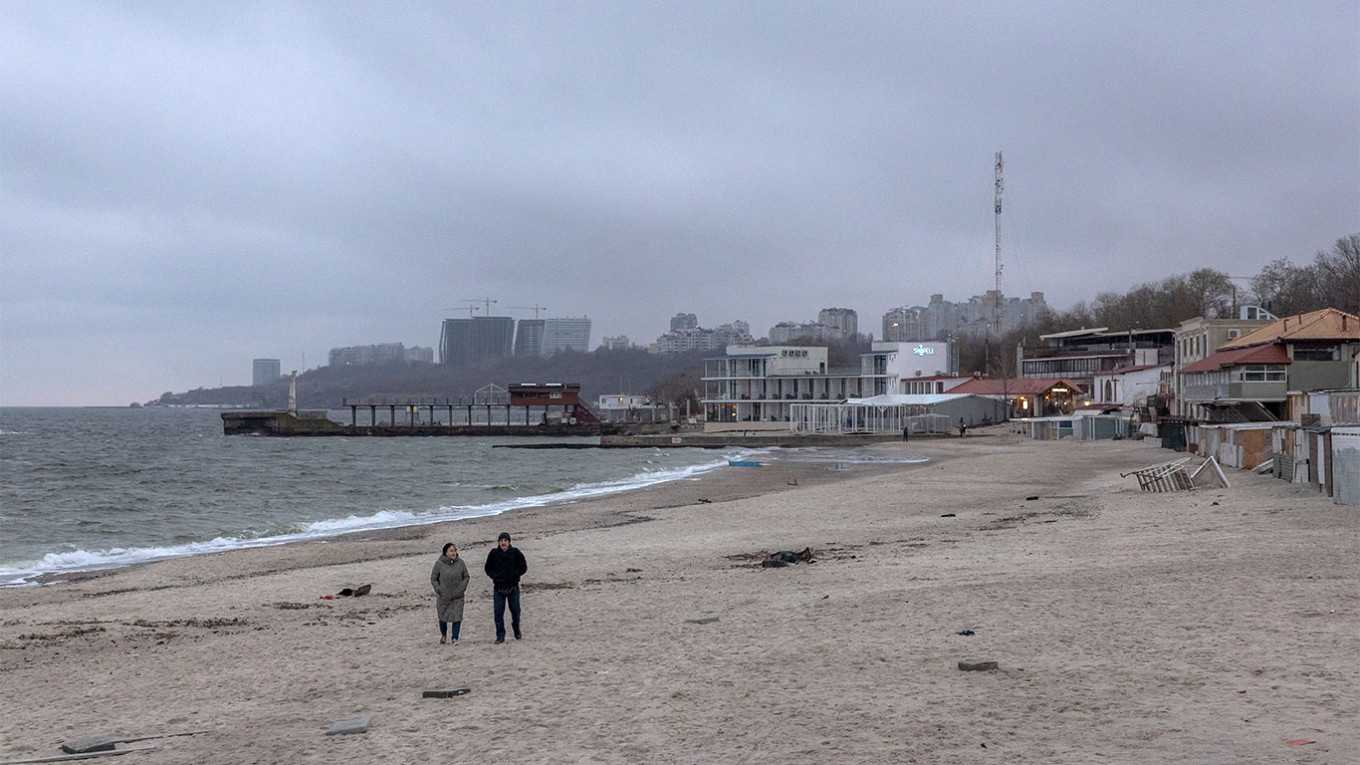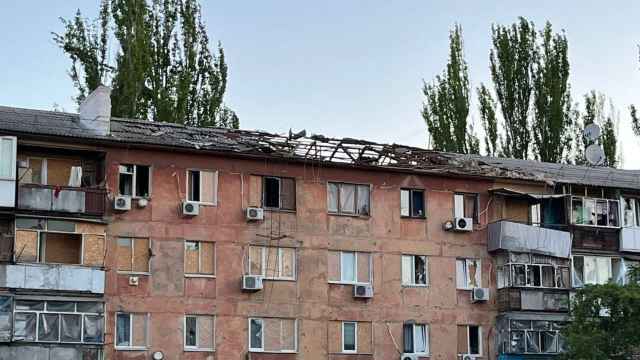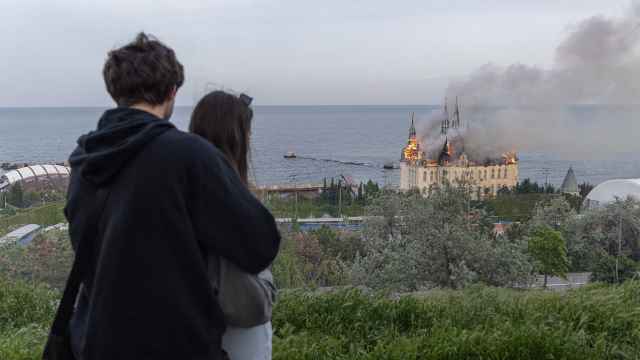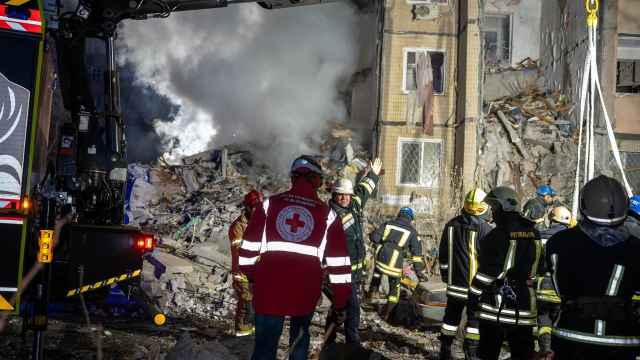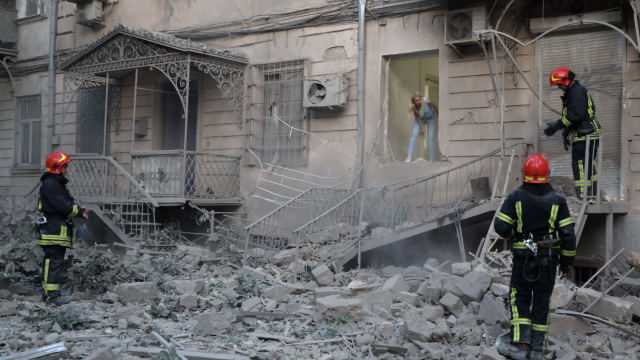On Dec. 29, 2022, a monumental statue of Russian Empress Catherine II in the center of Odesa was dismantled, marking the end of more than two decades of local and national debate. This trend of removing monuments to Russian imperialism following Moscow’s full-scale invasion of Ukraine is taking place as the Kremlin increasingly utilizes past narratives to justify its present military action. This is particularly evident in southern Ukraine, a region President Vladimir Putin has repeatedly asserted was not historically part of Ukraine.
This argument, rooted in imperial terminology like Novorossiya (New Russia), refuses to acknowledge the region’s historical and present connections to the Ukrainian Republic. Instead, it ties southern and eastern Ukraine to the chronology of the Russian Empire, the Soviet Union, and subsequently, the Russian Federation.
In December 2023, during Putin’s annual press conference, he affirmed that Odesa “is a Russian city.” This statement raises concerns about the next stages of the war, especially given the frequent missile strikes on Odesa and the importance of the port for exporting grain.
Despite Odesa’s relative distance from the current frontlines, the ongoing discourse about the port city’s supposed Russian identity suggests a possible expansion of Russia’s territorial ambitions. Exploring the historical roots of this debate and considering the roles of language and identity provides insights into the complex understanding of Odesa and its surrounding region.
The debate over Odesa’s identity is not a recent development. Rather, it is intricately linked to the mythmaking that accompanied the Russian Empire’s conquest of southern Ukraine in the late 18th century and the subsequent consolidation of Russia’s colonial control. During this period, the Black Sea steppes served both as a target of colonization and as a strategic tool for Tsarist expansion toward the Caucasus, and were renamed “New Russia.”
This terminology served to validate the military conquest and has been revived by contemporary Russian imperial apologists to construct a narrative of territorial loss. However, it is important to note that the label “New Russia” was never intended to accurately describe the social and cultural landscape of the northern Black Sea. Instead, it was primarily an administrative term, often used interchangeably with “southern Ukraine” and the “wild fields” throughout much of the pre-revolutionary era.
The demographics of the southern provinces presented a challenge for classification. Despite the ideological portrayal of the steppes as a Russian frontier territory, they were increasingly inhabited by non-Russians. The process of settlement transformed the northern shores of the Black Sea into a hybrid society, where villages of foreign cultivators coexisted with the steppe populations of Tatars and Cossacks.
The settler colonial nature of Southern Ukraine’s population was characterized by a demographic diversity that included more foreign colonists than internal Russian migrants, partly because the mobility of the Russian peasantry was limited by the institution of serfdom. This multinational composition was particularly evident in populations concentrated in port cities founded after Russia’s conquest including Kherson, Mariupol, Mykolaiv and Odesa.
Odesa quickly emerged as the dominant Black Sea port and primary hub for settlement, evolving into the economic and political center of Southern Russia. The city’s rapid boom was comparable to the growth observed in the American West during the same century. Within 50 years, it became the third-largest city in the Russian Empire.
The city’s population was diverse, drawing people from maritime nations of the Mediterranean and western Europe. Odesa housed substantial Greek and Italian merchant communities, Mennonite Germans, French expatriates, Poles in exile, and emerged as the main urban hub in the Pale of Settlement where Russian Jews were permitted to settle.
The substantial presence of non-Russian residents raised questions about the contested “Russianness” of New Russia, and especially of Odesa, which made imperial authorities uneasy. Some officials expressed concerns that the port city was “completely foreign, outside of the great Russian unity.” Local authorities had a vested interest in downplaying the number of foreign nationals in Odesa — since the main urban center of Novorossiya was the least Russian city of all.
A century after Odesa’s establishment, the first comprehensive census of the Russian Empire in 1897 recorded that non-Russian nationals made up just 7% of the city’s 400,000 residents. However, when using native language as a measure of nationality, the figure rose to 58% — including 49% Russian, 31% Yiddish, 10% Ukrainian, 4% Polish, and 2.5% German speaking.
Throughout the Russian imperial period, Odesa stood as a Russian city made of foreigners and embodied a divergence from Russianness rather than its colonial reproduction. Instead of continuity, the historical discourse about the northern Black Sea emphasized an enduring binary: the territory was constructed as Russian, while its maritime ports were seen as cosmopolitan and foreign hubs. Emphasizing this division between Russians and a broadly defined category of “foreigners” leaves little room for examining the Ukrainian presence.
At first glance, Ukrainian speakers appeared to constitute a relatively small linguistic group, representing less than one-tenth of Odesa’s population. Contemporary Kremlin discourses tend to reinforce this perspective, dismissing any connection between the Black Sea and Ukraine.
The argument faces several challenges. First, by the time of the 1897 census, the practice and teaching of Ukrainian had been significantly restricted due to intensified Russification policies since 1874, meaning that using language as a measure of nationality is unreliable. With Ukrainian publications banned, the language’s revival was primarily driven by the cultural efforts of secret societies such as the Odessa Hromada. In the urban context alone, the share of ethnic Ukrainians could thus encompass some Russian speakers, meaning ethnic Ukrainians may have been more numerous than language or official nationality-based statistics might suggest.
Furthermore, the traditional distinction between urban and rural life in Ukrainian society meant that until the 20th century, most Ukrainians resided in rural areas. Cities functioned as “Russifying machines” through the efforts of Russia’s imperial administration and universities.
Examining the demographic composition of the three southern provinces of “Novorossiya” based on the 1897 census data presents a markedly different perspective. Across each province, a Ukrainian presence endured at an average of 55%. The census results therefore indicate that across the territories of “New Russia” self-identifying Ukrainians remained the majority, even after more than a century of imperial rule.
Over the centuries, Russian authorities, including the Tsars, harbored distrust toward Odesa’s deep connection to transnational networks, dubbing it a “nest of conspirators.” The shift from this perceiving Odesa as a city of Russians and foreigners to one of Russians and Ukrainians emphasizes the strategic position of Odesa and its surrounding region for Russian military ambitions on the Black Sea. This reframing portrays the area as a lost imperial core, fostering a narrative of yearning for reunification with Russia.
The debate surrounding the statue of Catherine II in the heart of Odesa shows how far-fetched the prospect of a seamless reunification with Russia is. After the first removal by the Bolsheviks in 1920, the statue was re-inaugurated amid protests in 2007, and faced removal once again 15 years later. As a symbol of a crucial moment in Ukrainian history, marked by the introduction of serfdom and the end of Cossack autonomy, parallels between Catherine II's conquest of the Black Sea steppe and Putin’s annexation of the Crimean Peninsula in 2014 and 2022’s full-scale invasion are easy to draw.
Putin’s frequent references to the Russian Empire have evolved into potent political tools, surpassing the significance of allusions to a shared Soviet past. This positioning places Odesa on the geopolitical map as a part of an expanded Greater Russia.
The Kremlin’s revival of Russia’s Tsarist past has faced resistance in Odesa. From an initial public ambivalence toward the statue, with Odesites taking pride in their city’s commercial and cosmopolitan history from the imperial era, the dynamics shifted dramatically after the full-scale invasion of Ukraine. Contrary to what the Russian narrative would have one expect, Catherine’s legacy in Odesa was not embraced as a justification for annexation. Online petitions in 2022 overwhelmingly called for the statue’s removal.
In contrast to Vladimir Putin’s simplistic assertion that Odesa is a Russian city, the attitudes of the residents of Odesa show how the city values its Ukrainian identity despite the complex legacies of Russian settler colonialism.
A Message from The Moscow Times:
Dear readers,
We are facing unprecedented challenges. Russia's Prosecutor General's Office has designated The Moscow Times as an "undesirable" organization, criminalizing our work and putting our staff at risk of prosecution. This follows our earlier unjust labeling as a "foreign agent."
These actions are direct attempts to silence independent journalism in Russia. The authorities claim our work "discredits the decisions of the Russian leadership." We see things differently: we strive to provide accurate, unbiased reporting on Russia.
We, the journalists of The Moscow Times, refuse to be silenced. But to continue our work, we need your help.
Your support, no matter how small, makes a world of difference. If you can, please support us monthly starting from just $2. It's quick to set up, and every contribution makes a significant impact.
By supporting The Moscow Times, you're defending open, independent journalism in the face of repression. Thank you for standing with us.
Remind me later.



